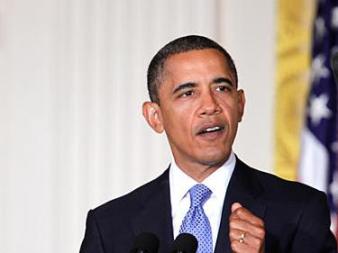Identifying the best colleges suited to individual students is just part of the growing challenge of assuring that the country's universities and colleges remain the best in the world. For more than half a century, American higher education has been desire of the globe, providing an unparalleled combination of academic quality and student access. So far today America's excellence is threatened.
Today's scenario: A generation ago United States had the highest graduation rate in the world. Today it ranks 12th among developed counties in the percentage of young mature with degrees.
In the global economy earning a degree is more significant than in the past, while a high school graduate might land the well-paid job in an auto factory, steel mill or other industries that propelled the economy.
The President barack Obama mission 2020:
That irreversible sea-change in job markets prompted President Obama to announce soon after taking office that "America cannot lead in the 21st century except we have the best-educated, most competitive workforce in the world."

To meet that faces, the president Obama set an ambitious but widely shared goal: By 2020 the United States should once again have the highest percentage of college graduates across the world.
The 2020 goal is the North Star guiding all the efforts to advance the education. Approximately 60 percent of Americans will have to earn college degrees and certificates by 2020 to regain our international lead as it is about 40 percent today.
Ideas to enhance the graduation rate: For the last 50 years U.S. higher education involved the most brilliant scholars and students from here also from abroad. It nurtured creative clusters that turned into regional engines of commerce and spawned new markets. Except in the century American wealth will largely be determined by how quickly colleges and universities get used to the new realities of global competition. Employers now are looking to higher education to develop not just technical know-how but critical thinking skills like adaptability, ability to work in teams, creativity, leadership and the capacity to converse concisely.
In the period of the knowledge innovation, economy and institutional accountability are the paths forward to revitalizing American competitiveness. Colleges and universities have to be developing and expanding evidence-based practices to enhance access to college accelerate learning and support success in the workplace and life, though doing so means moving past traditional methods of scheduling, structuring classes and as well as 20th century academic programs in need of modernization.
To name one instance, more colleges and universities must make better use of knowledge and cognitive science to improve learning. We must encourage visionaries who develop new technologies and teaching practices that can barely be imagined today everything from games that instruct students to online courses that rapidly identify and address individual learning deficits. These innovators looking for a goal we all can share to transform higher education from the system that weeds people out to one that lifts people up.

Parents and Students also have essential roles to play in helping higher education expand access and boost graduation rates. In the coming ten years students and families will find it easier to obtain data about performance of postsecondary institutions. What proportion of students attending a school graduate and how long does it take them to get a degree? How much student debt will the standard student take when he or she graduates? What are the employment prospects and salary histories of graduates from dissimilar programs and schools?
In the global economy answers to these questions is vital-not only to get better instruction and elevate graduation rates except to strengthen accountability and consumer self-assurance in the value of education. Making more of this data transparent and readily available would empower students and their families to be improved informed consumers of higher education and build competitive pressures to advance all postsecondary institutions.